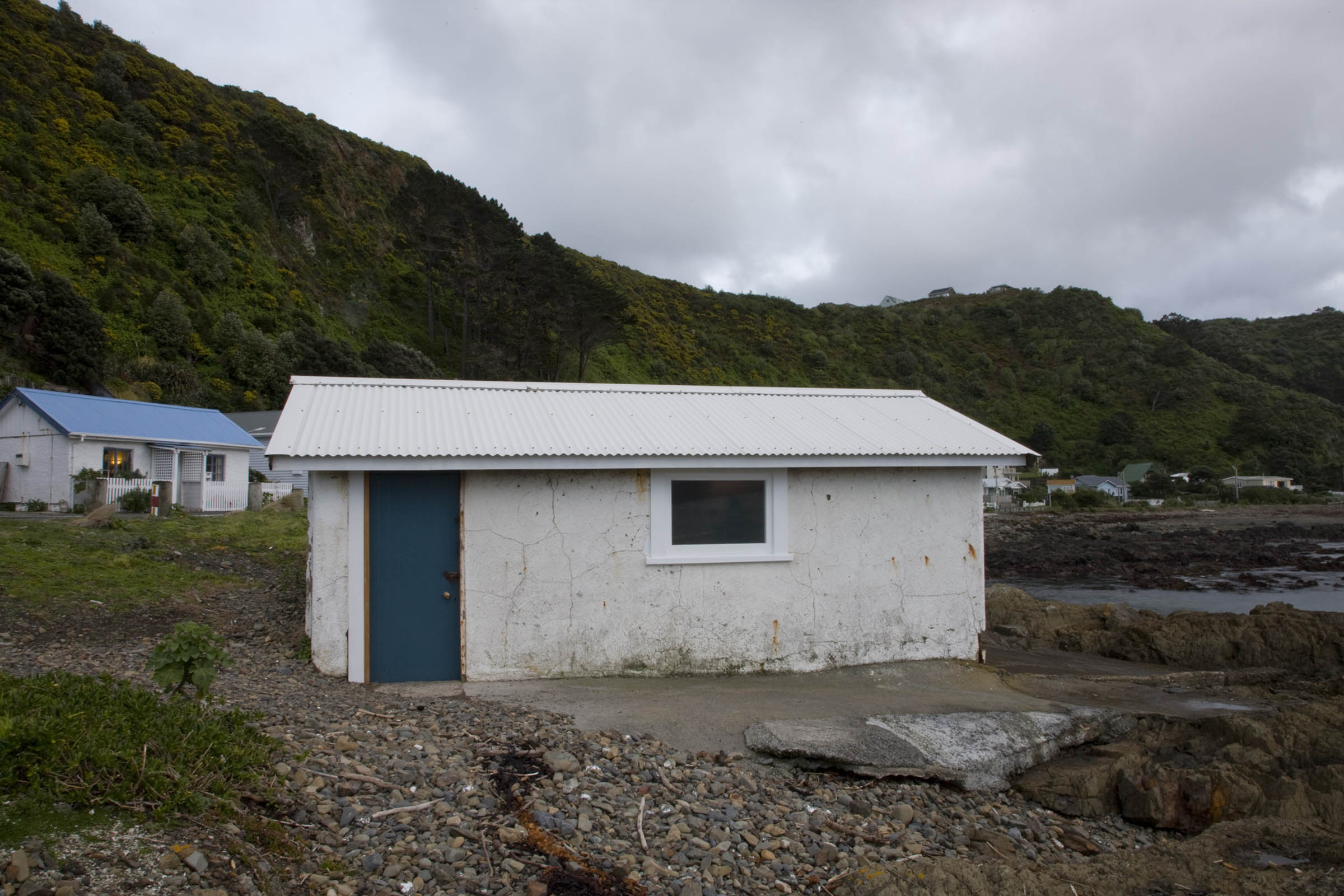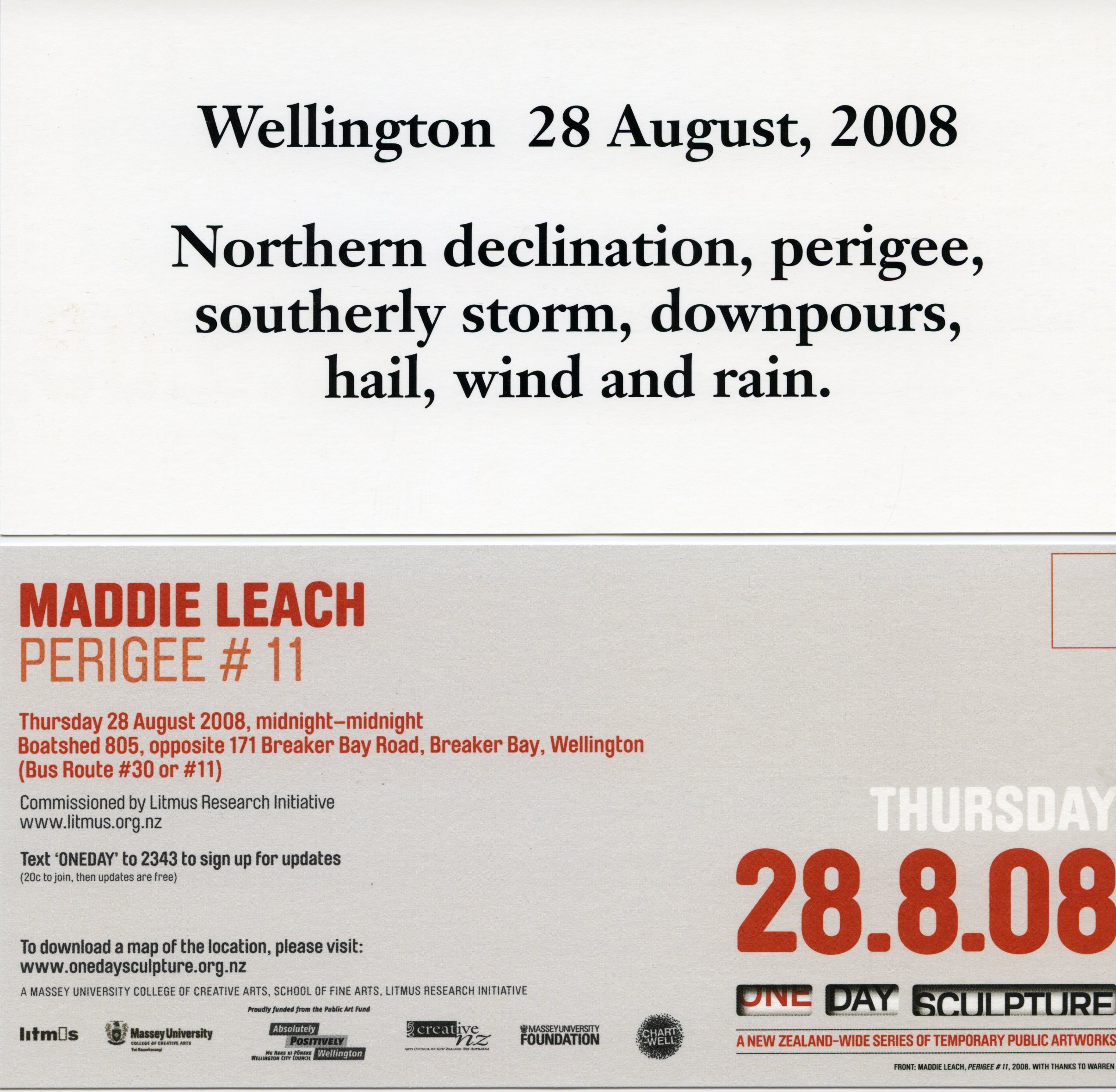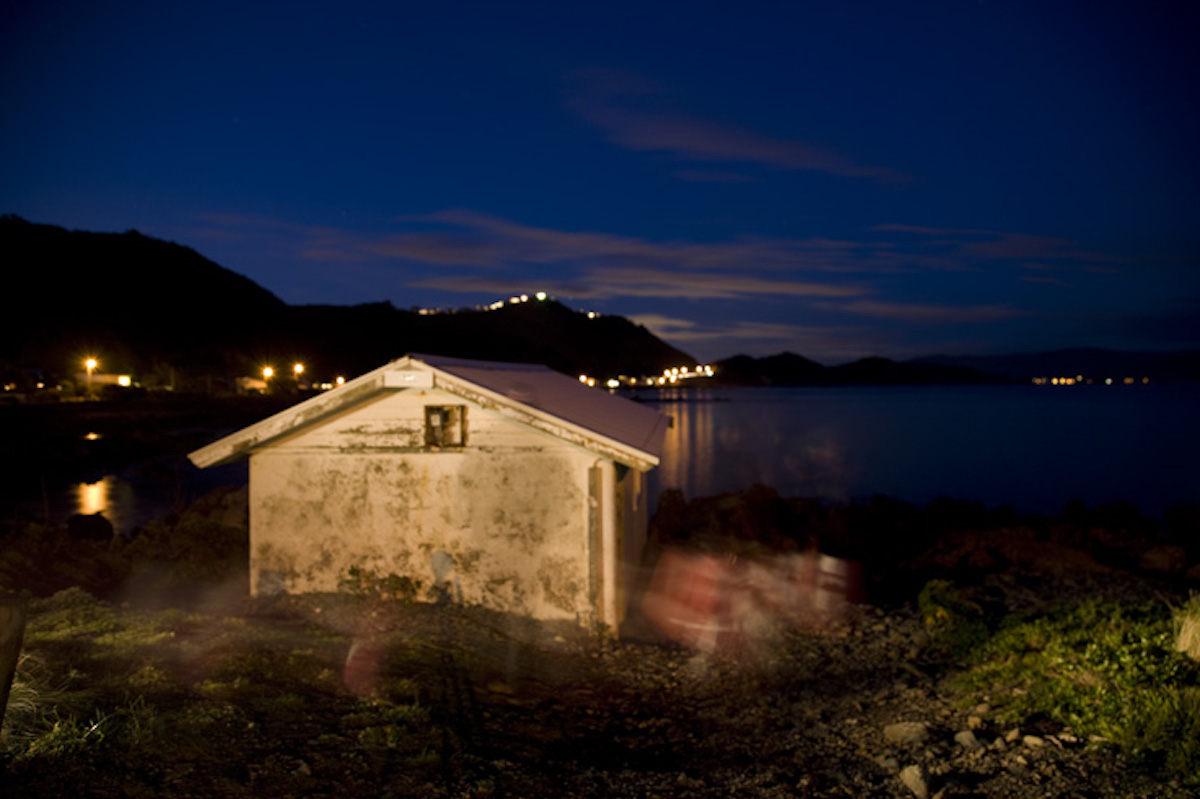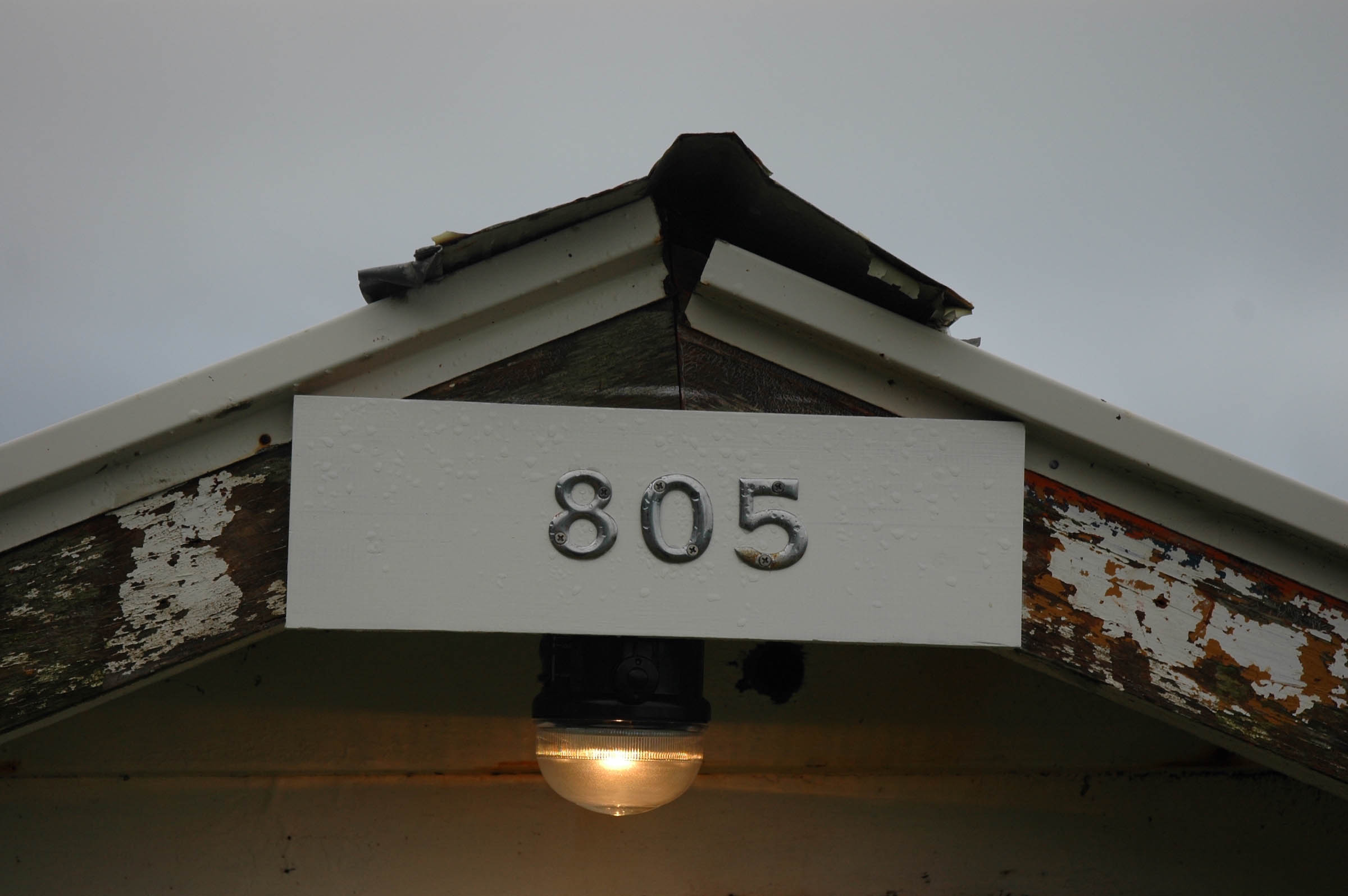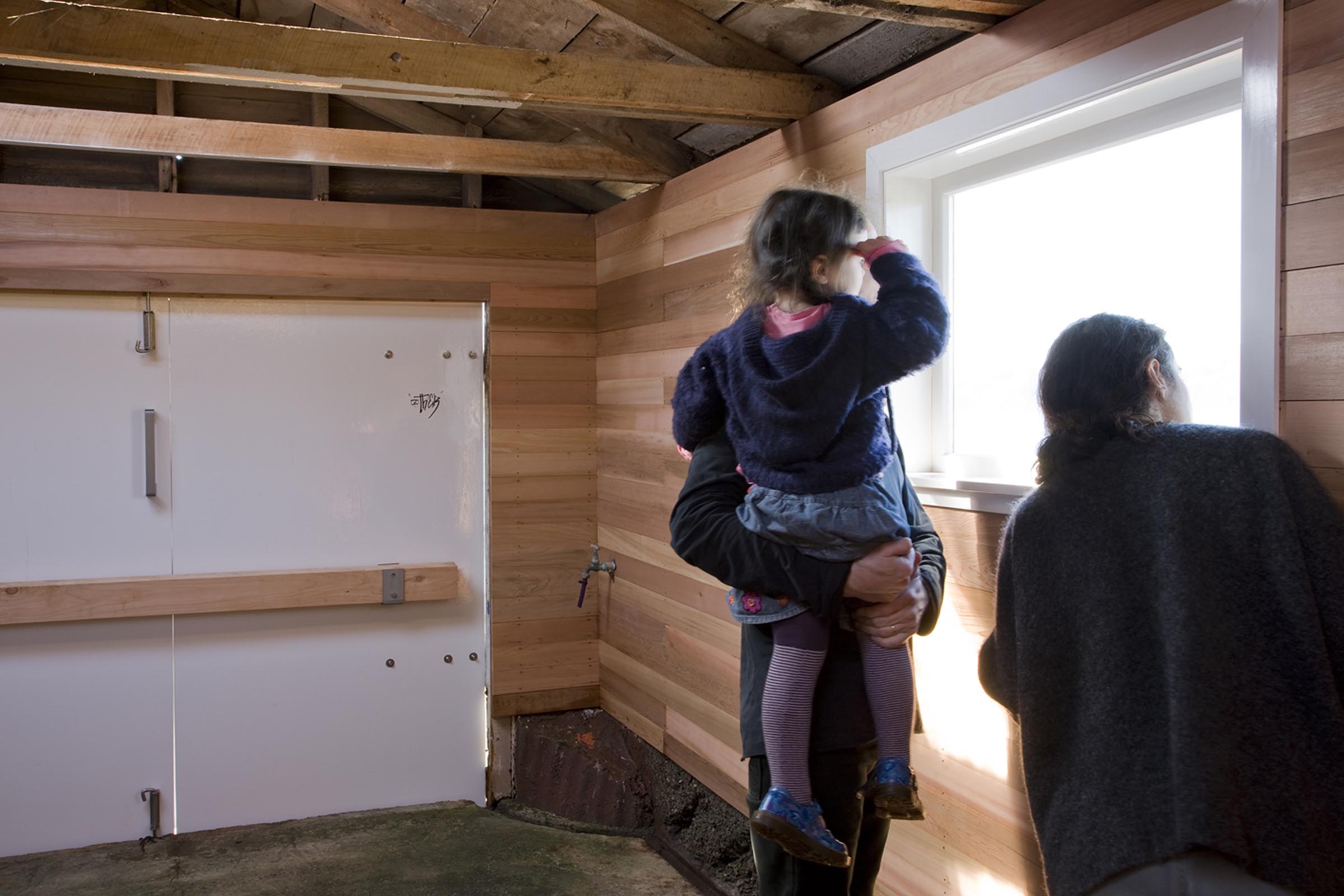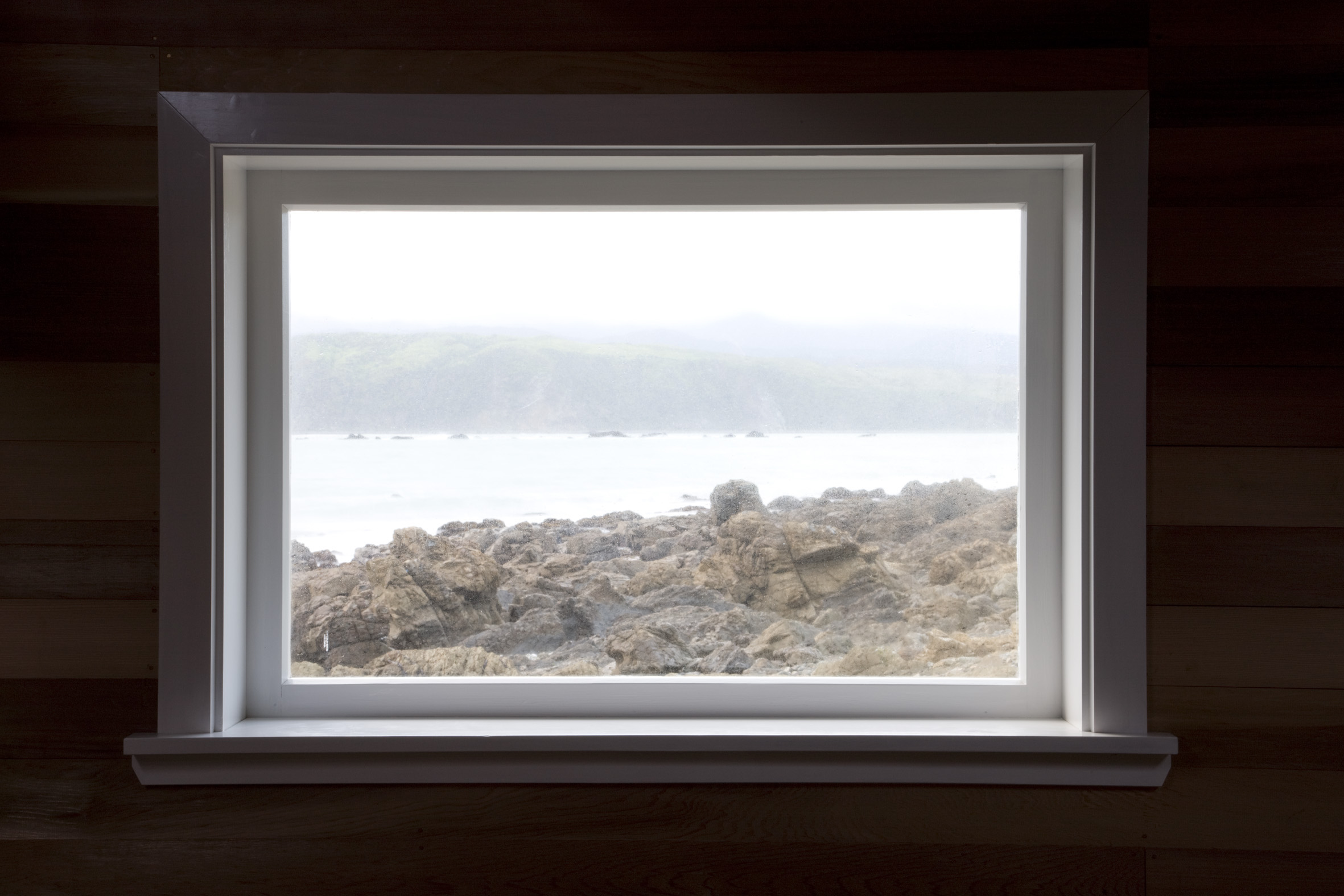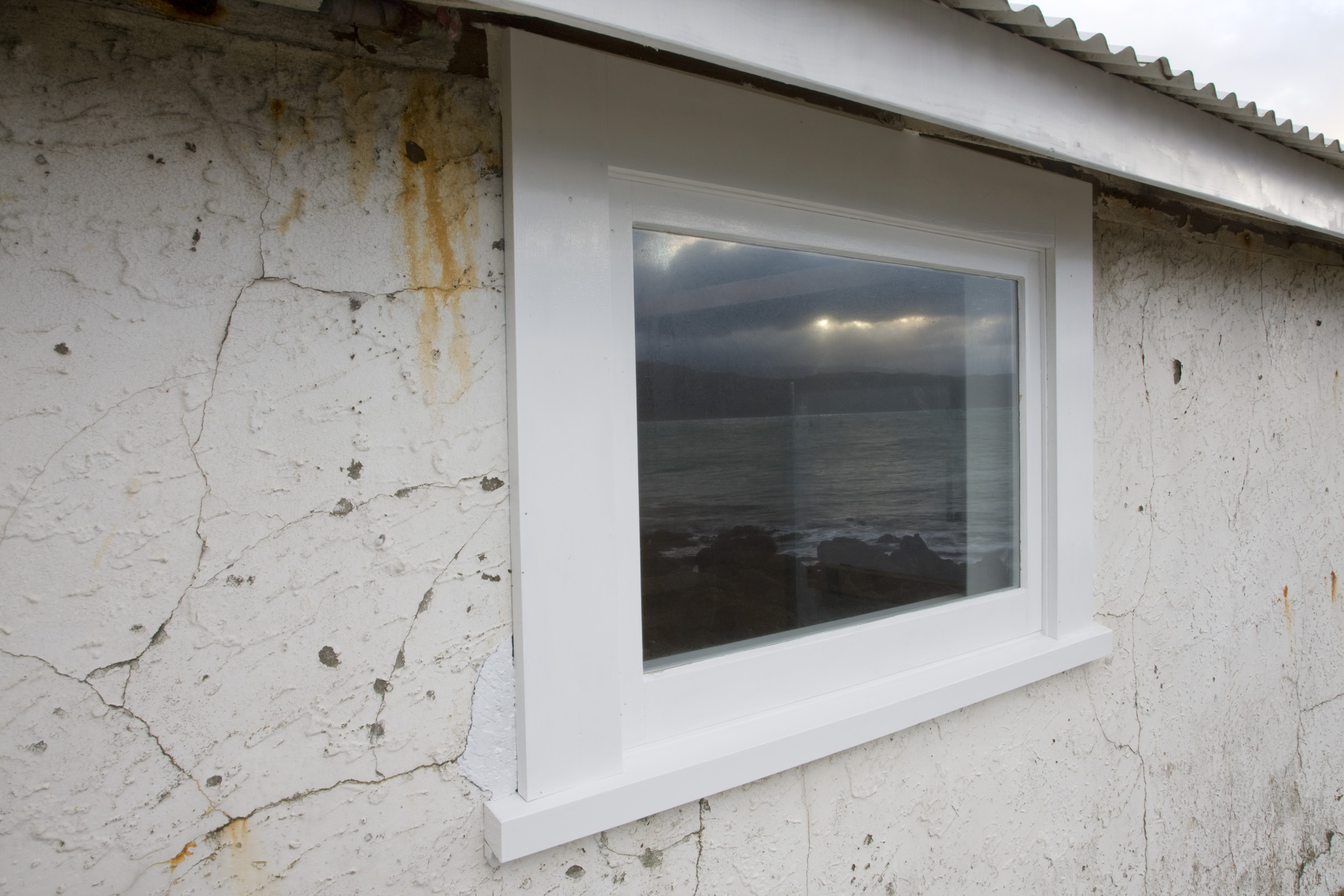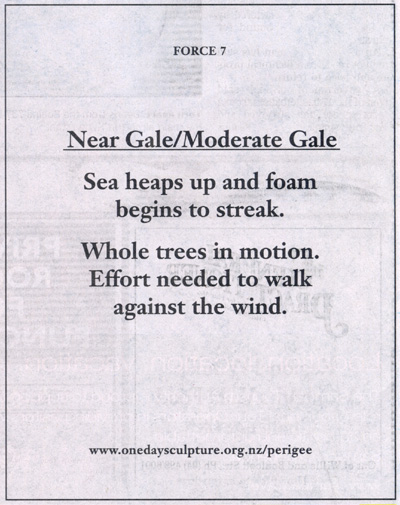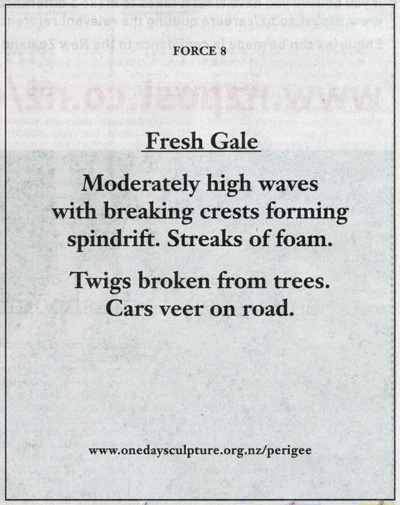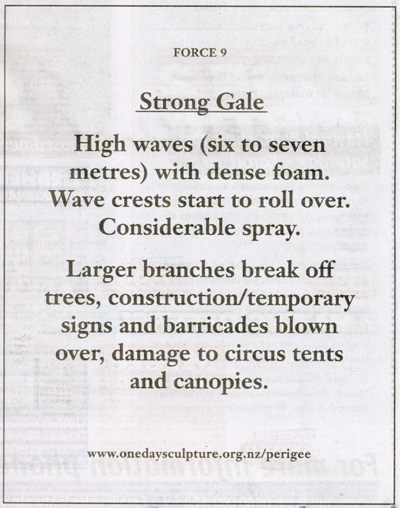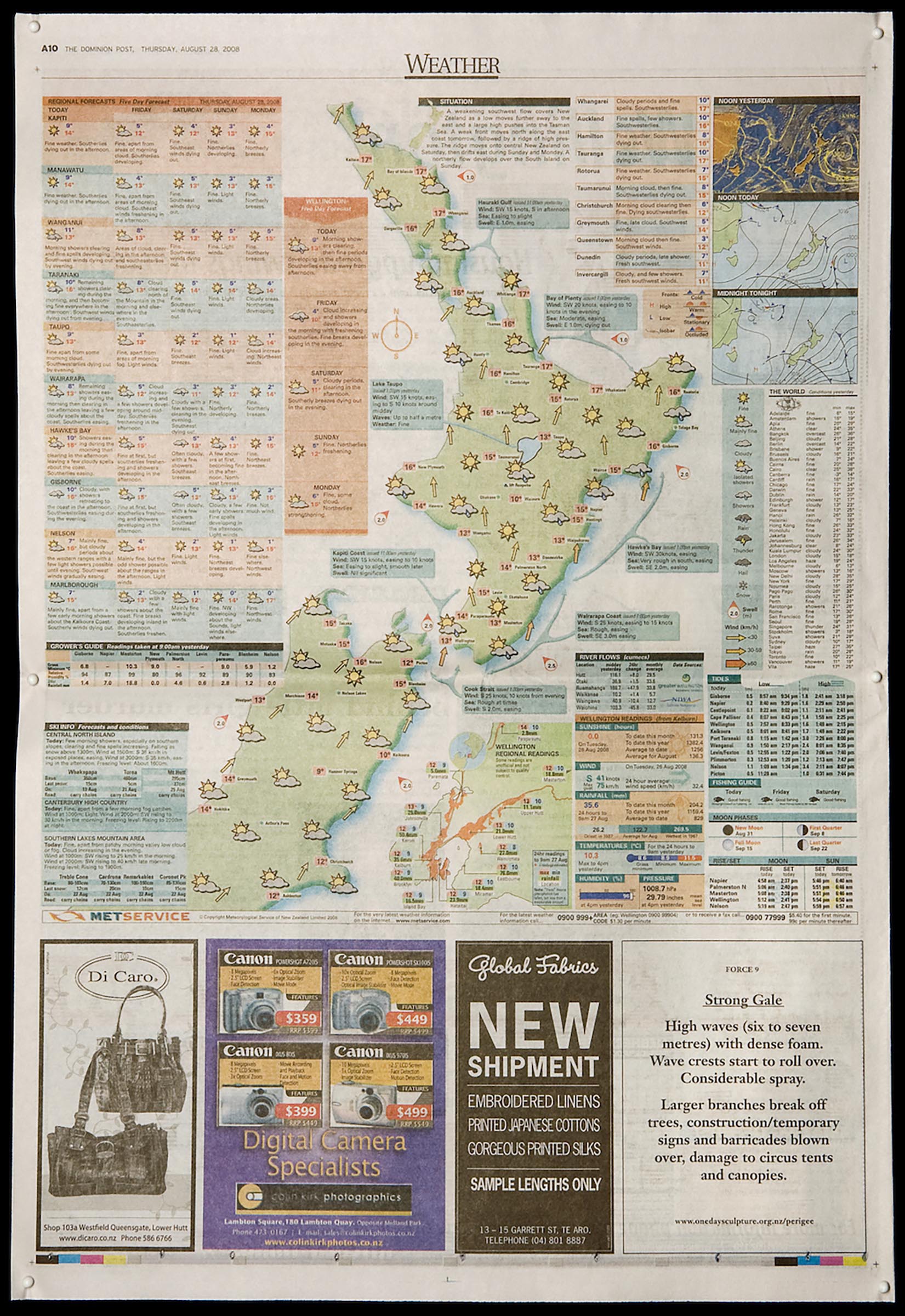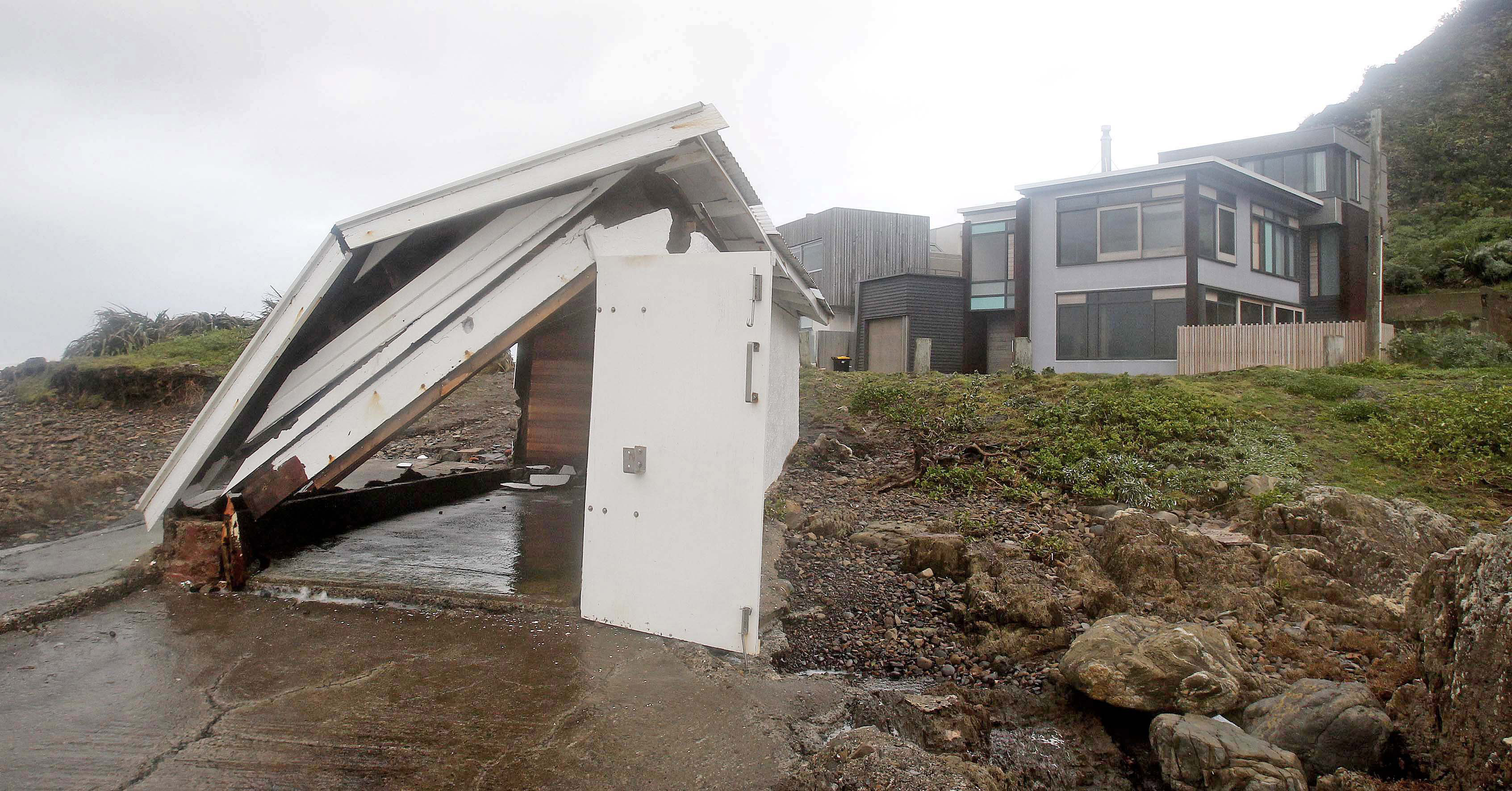Project commission for One Day Sculpture
Curator: Claire Doherty
Description
- Long range forecast by lunar forecaster Ken Ring at www.predictweather.com;
- Beaufort wind scale texts printed in the Dominion Post weather page 26–28 August 2008;
- Reconditioned boatshed (cedar planking, custom window, custom doors);
- Small battery powered lamp;
- VHF radio receiver/scanner receiving intermittent shipping communications via Beacon Signal Station.
Credits
Carpentry and installation: Tim Larkin
Designer: Warren Olds, Studio Ahoy
Photography: Stephen Rowe
On 28th August 2008, a storm was predicted over the city of Wellington. Using a long-range weather forecasting system developed by mathematician Ken Ring, Maddie Leach pinpointed a winter’s day in which downpours, hail, wind and rain were expected to descend upon the North Island’s most southerly city. A perigee is the moment at which the moon is at its closest to the earth each month and, according to Ring, it is around this time that significant changes in weather patterns occur.
Anticipation for the storm was built by the artist through a series of newspaper forecasts which appeared prior to the notable day of the project. On the day itself we were encouraged to seek out a boatshed at Breaker Bay, set at the mouth of the harbour, Te Whanganui-a-Tara, from which to watch in anticipation over the Cook Strait over a period of 24 hours.
Leach’s work has always been concerned with potentiality and it is in that gap between actuality and potentiality, in the waiting for something to happen, that Leach encourages us to think back and forth between what we imagine is going to happen and what we are experiencing physically. What does it feel like to seek out the boatshed at 3am awaiting a storm? Or do you battle against the winds with a group of friends at sundown? When you look out across the sea from the shed, do you solemnly recall the 1968 Wahine Disaster or does the conversation turn to the mundanity of daily drizzle? Or do you spend the afternoon in the sunshine wondering what it must feel like to be hauled up in a shed awaiting a storm?
Adapted as part-viewing platform, part-shelter, the shed is the most obviously sculptural aspect of the project, occurring as a temporary public sculpture on Wellington’s coastal road, but of course it is only one aspect of this project. Perigee #11 occurs as rumour, as text, as topic of conversation, as quest, and as a site of sociability in public space, always slightly out of our grasp, occurring always in the future and then in the past.
Claire Doherty
One Day Sculpture. Bielefeld: Kerber Verlag, 2009
